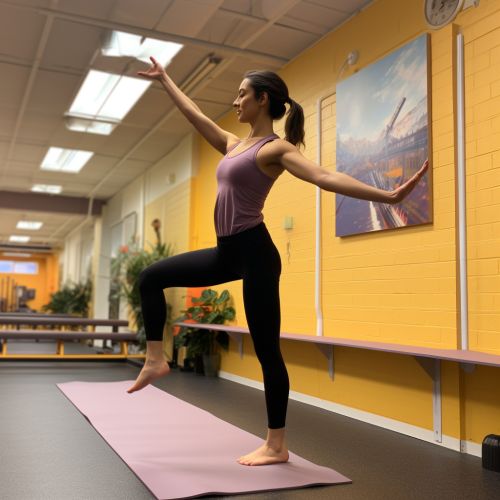Dynamic Stretching
Overview
Dynamic stretching is a form of exercise that involves controlled, deliberate movements to improve flexibility and prepare the body for physical activity. Unlike static stretching, where stretches are held for a period of time, dynamic stretching involves active movement that helps to increase range of motion and blood flow to the muscles.


Physiology of Dynamic Stretching
Dynamic stretching works by gradually increasing the speed and range of movement in order to improve flexibility and muscle function. This type of stretching stimulates the muscle spindles, which are sensory receptors located within the muscle that respond to changes in muscle length and velocity. The muscle spindles send signals to the central nervous system, which in turn causes the muscle to contract or relax.
Benefits of Dynamic Stretching
Dynamic stretching has several benefits, particularly when performed before physical activity. These benefits include:
- Improved Flexibility: Dynamic stretching can help to increase range of motion and flexibility, which can improve performance in physical activities and reduce the risk of injury.
- Increased Blood Flow: By moving the muscles and joints, dynamic stretching helps to increase blood flow and oxygen delivery to the muscles. This can help to improve muscle function and reduce muscle fatigue.
- Enhanced Performance: Dynamic stretching can help to prepare the body for physical activity by warming up the muscles and increasing their elasticity. This can lead to improved performance in sports and other physical activities.
- Injury Prevention: By improving flexibility and muscle function, dynamic stretching can help to reduce the risk of muscle strains and other injuries.
Techniques and Examples
There are many different types of dynamic stretching exercises, each designed to target specific muscle groups. Some examples include:
- Leg Swings: This exercise targets the hip flexors and hamstrings. Stand next to a wall or other support, and swing one leg forward and backward in a controlled manner.
- Arm Circles: This exercise targets the shoulders and upper back. Stand with your feet shoulder-width apart and extend your arms out to the sides. Make small circles with your arms, gradually increasing the size of the circles.
- Walking Lunges: This exercise targets the quadriceps, hamstrings, and glutes. Take a step forward with one foot and lower your body into a lunge position. Push off with your front foot and bring your back foot forward into the next lunge.
Precautions and Considerations
While dynamic stretching can be beneficial, it is important to perform these exercises correctly to avoid injury. Some precautions and considerations include:
- Warm Up: It is important to warm up the body with light cardio activity before performing dynamic stretches. This can help to increase blood flow to the muscles and prepare them for stretching.
- Control: Dynamic stretches should be performed in a controlled manner to avoid overstretching or straining the muscles.
- Technique: Proper technique is crucial when performing dynamic stretches. Incorrect technique can lead to injury.
- Individual Needs: The type and intensity of dynamic stretches should be tailored to the individual's fitness level and specific needs. It may be beneficial to work with a physical therapist or other fitness professional to develop an appropriate stretching routine.
